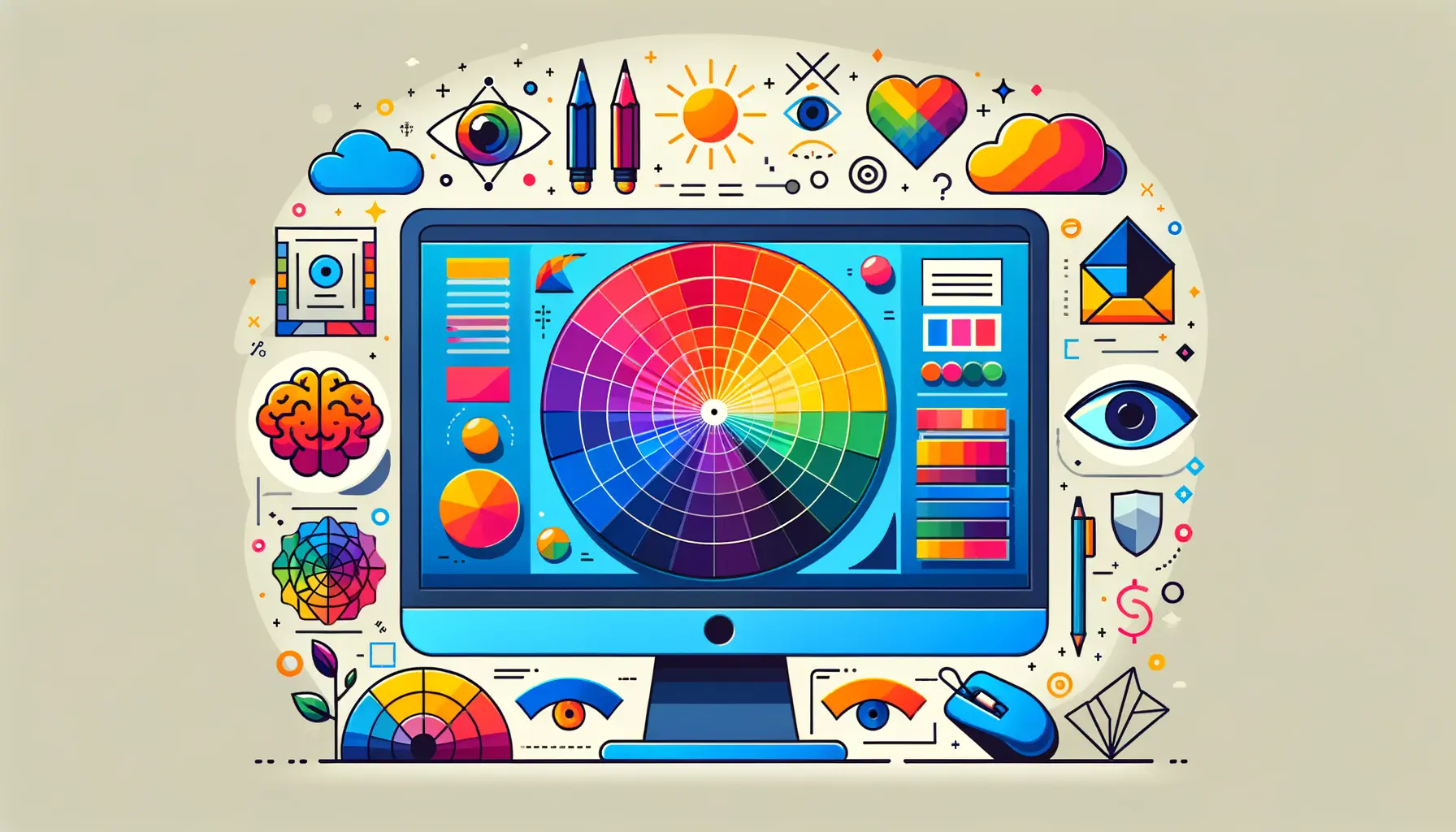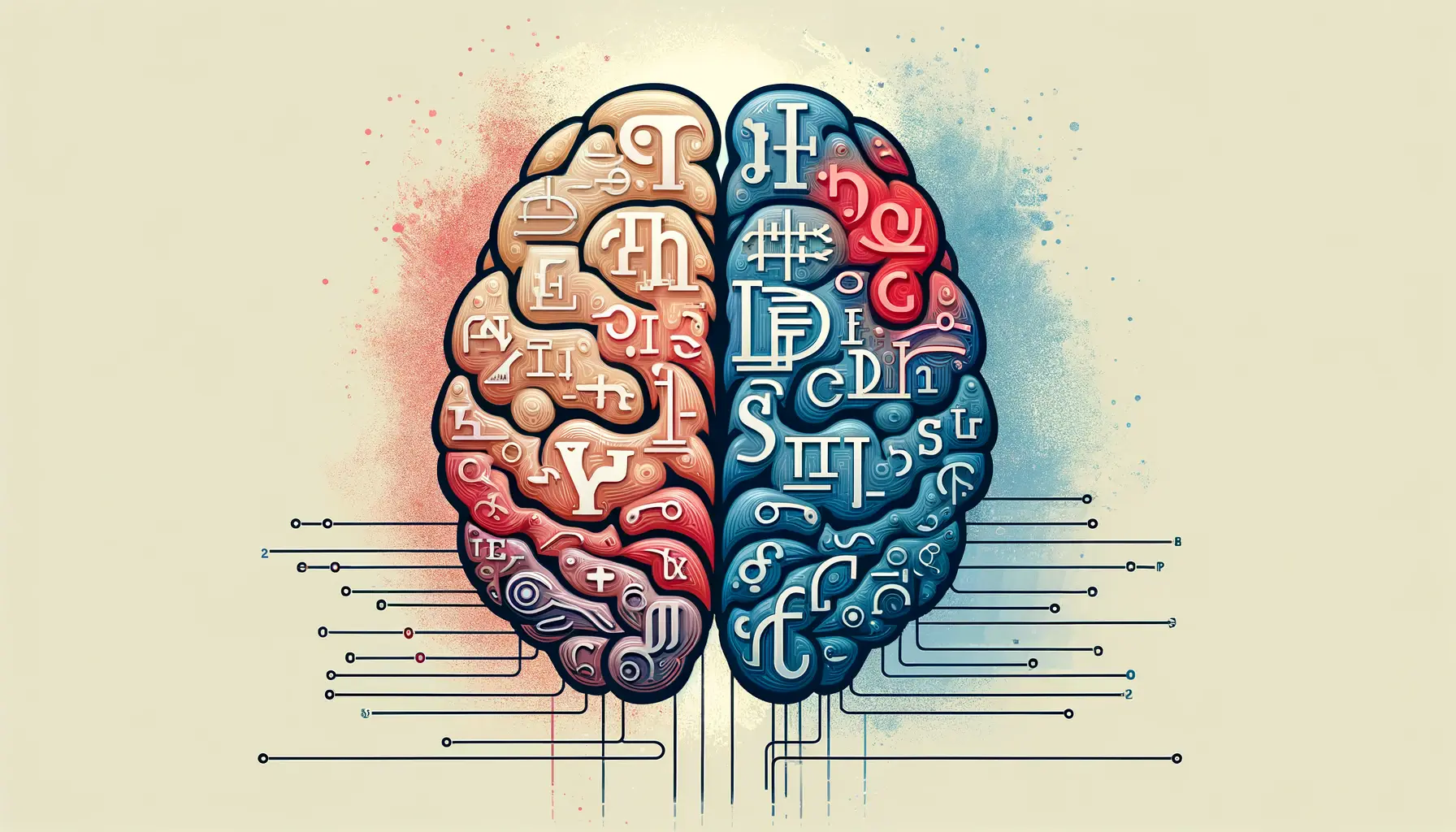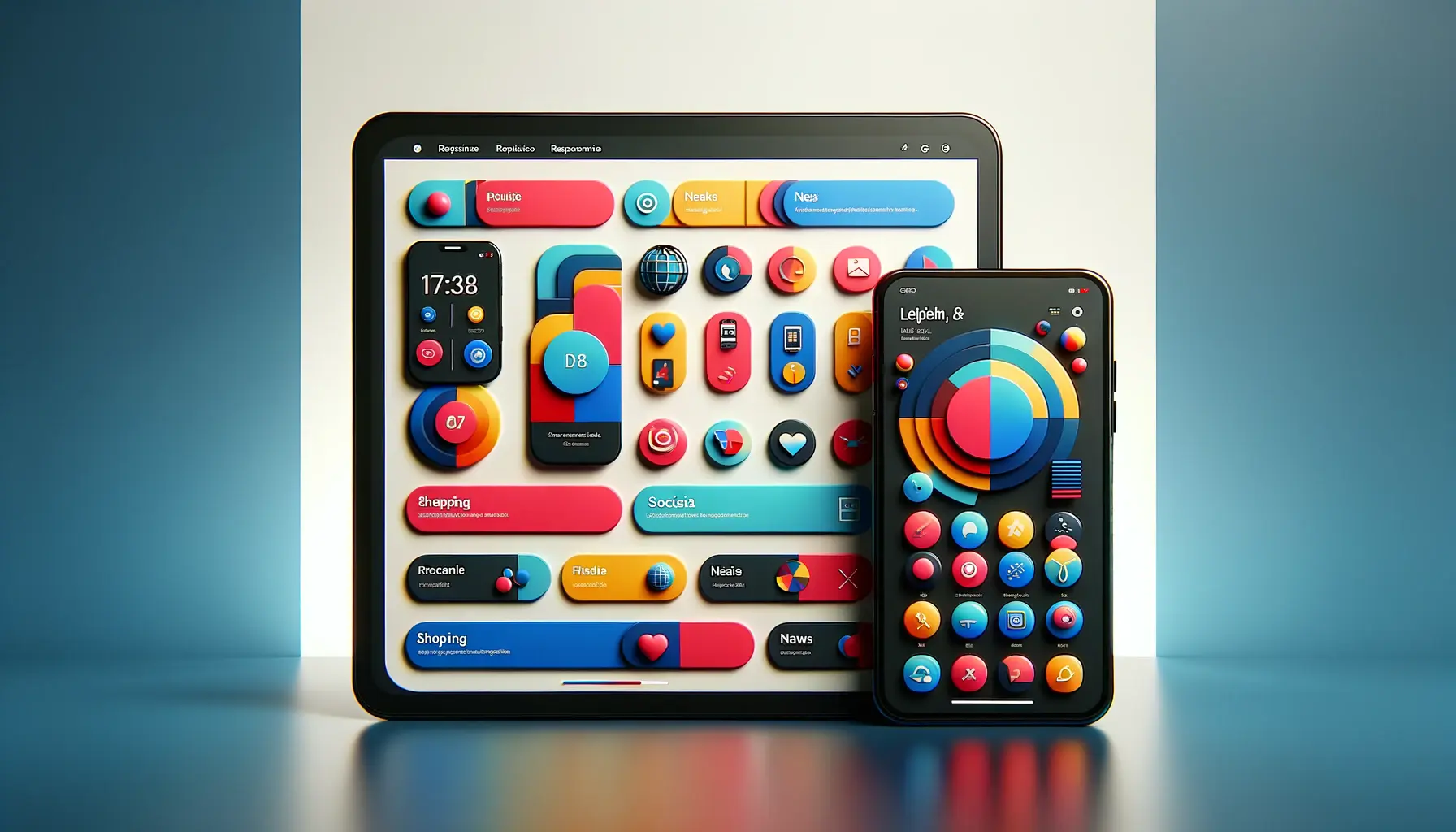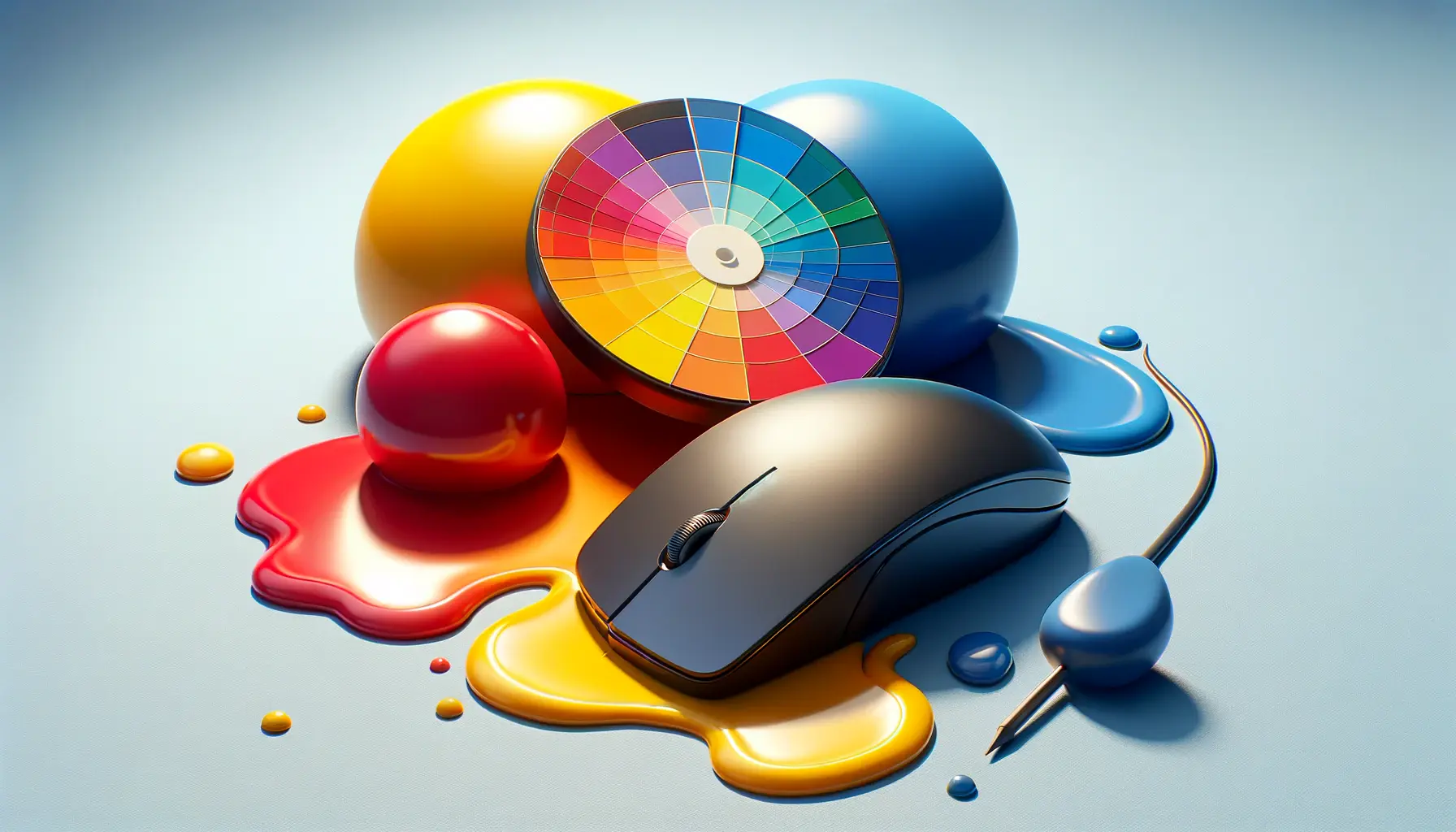Understanding the science of color perception is crucial in the realm of web design, where colors do much more than just make things look attractive.
They communicate messages, evoke emotions, and significantly influence user decisions.
The interplay between color theory and web design is not just an art; it’s a science that taps into the psychological underpinnings of human perception.
This intricate dance between color and cognition is what makes web design a powerful tool in digital communication.
The main keyword, “Science,” in the context of web design color theory, refers to the systematic study of how colors affect us.
It’s about leveraging research and knowledge to create visually compelling and psychologically effective web experiences.
This article delves into the fascinating world of color perception and its application in web design, offering valuable insights into how to use color scientifically to enhance user engagement and achieve specific outcomes.
- Introduction to Color Theory
- The Psychological Impact of Colors
- Color and Brand Identity
- Impact of Color on Website Accessibility
- Color Trends in Web Design
- Optimizing Color for User Engagement
- Color and Website Performance
- Conclusion: The Integral Role of Color in Web Design
- FAQs: The Science of Color Perception in Web Design
Introduction to Color Theory
Understanding Color Theory
At the heart of color perception in web design lies color theory, a cornerstone in the foundation of web design that guides the use of color in creating aesthetic and functional designs.
Color theory is not just about choosing appealing color combinations; it’s about understanding the emotional and psychological effects of colors on viewers.
This knowledge is crucial for web designers aiming to evoke specific feelings or actions from their audience, such as tranquility, excitement, or urgency.
Color theory encompasses a range of concepts, including the color wheel, color harmony, and the context in which colors are used.
By mastering these concepts, designers can create more effective and compelling websites.
The color wheel, with its primary, secondary, and tertiary colors, serves as a visual representation of colors and their relationships.
Understanding these relationships helps designers achieve color harmony, which is essential for creating visually appealing and balanced designs.
Applying Color Theory in Web Design
Applying color theory in web design goes beyond aesthetic appeal; it involves strategic use of color to guide user behavior and achieve business goals.
For instance, choosing the right colors for call-to-action buttons can significantly increase conversion rates.
Similarly, the use of contrasting colors can enhance website readability and usability, making it easier for users to navigate and find information.
Moreover, color can be used to create visual hierarchies, directing users’ attention to the most important elements of a website.
By understanding the psychological effects of different colors, web designers can influence users’ perceptions and actions, making color an invaluable tool in the web design arsenal.
This strategic approach to color use is what transforms good web design into great web design, making it not just a matter of beauty but of science and strategy.
The science of color perception plays a pivotal role in web design, influencing user behavior and decision-making processes.
The Psychological Impact of Colors
The psychological impact of colors is a fundamental aspect of web design that goes beyond mere aesthetics.
Colors have the power to evoke specific emotions and behaviors, making their selection a critical part of the design process.
This section explores how different colors can influence website visitors and how this knowledge can be applied to enhance user experience and engagement.
Color Associations and Emotional Responses
Each color evokes distinct emotional responses and associations, deeply rooted in psychological principles and cultural contexts.
Here’s a brief overview of common color associations:
- Red: Associated with energy, passion, danger, and urgency. Often used to attract attention and encourage action.
- Blue: Evokes feelings of trust, security, and calm. Preferred for corporate and informational websites to promote reliability.
- Green: Symbolizes nature, health, and tranquility. Ideal for environmental and wellness-focused sites.
- Yellow: Represents happiness, optimism, and caution. Used to draw attention and convey a sense of positivity or warning.
- Orange: A blend of red’s energy and yellow’s happiness. It’s engaging and inviting, often used for calls to action.
- Purple: Conveys luxury, creativity, and mystery. Suitable for brands aiming to appear luxurious or imaginative.
- Black: Associated with sophistication, power, and elegance. Commonly used in high-end product websites.
- White: Symbolizes purity, cleanliness, and simplicity. Used to create a minimalist aesthetic and enhance other colors.
Utilizing Color Psychology in Web Design
Understanding the psychological impact of colors allows web designers to strategically influence user behavior and decision-making.
Here are some ways to apply color psychology in web design:
- Use warm colors like red and orange to create a sense of urgency or highlight calls to action.
- Employ cool colors such as blue and green to establish trust and relaxation, making them ideal for banking or healthcare websites.
- Incorporate yellow to grab attention and inject positivity, especially in creative or children-oriented websites.
- Choose purple for luxury or beauty brands to evoke elegance and sophistication.
- Opt for a black-and-white palette for a modern, clean look that emphasizes other design elements.
The strategic use of color based on psychological principles can significantly enhance user experience and engagement on websites.
Color and Brand Identity
Color is a pivotal element in establishing and communicating a brand’s identity.
It’s not just about aesthetics; it’s about conveying the essence of the brand and connecting with the audience on an emotional level.
This section delves into how color choices can shape brand perception and loyalty.
The selection of colors for a brand’s web presence must align with its core values and the message it intends to convey.
Colors have the power to enhance brand recognition, differentiate it from competitors, and influence consumer behavior.
A well-chosen color palette can become as synonymous with a brand as its logo or slogan, making it a crucial component of brand strategy.
Consistency Across Platforms
For a brand to be memorable, consistency across all platforms is key.
This includes websites, social media, packaging, and any other customer touchpoints.
Consistent use of color strengthens brand identity, making it easily recognizable and reinforcing the brand’s message.
For example, a brand that uses shades of green to emphasize its commitment to sustainability should ensure that this color theme is present across all its digital and physical branding materials.
Consistent color usage aids in creating a cohesive brand experience, which in turn builds trust and reliability in the eyes of the consumer.
When users encounter the same colors across different platforms, it reinforces brand recognition and enhances the overall impact of the brand’s visual identity.
Choosing Colors for Your Brand
Choosing the right colors for your brand involves understanding the target audience, the brand’s personality, and the emotional responses different colors evoke.
Here are steps to guide the color selection process:
- Identify the brand’s core values: Determine what your brand stands for and the message you want to convey.
- Understand your audience: Consider the preferences and cultural contexts of your target demographic.
- Study color psychology: Research the emotional and psychological effects of various colors.
- Test and refine: Experiment with different color schemes and gather feedback to refine your choice.
By carefully selecting colors that reflect the brand’s identity and resonate with the target audience, businesses can create a strong and lasting impression.
This strategic approach to color selection not only enhances brand recognition but also plays a crucial role in building a loyal customer base.
A thoughtfully chosen color palette is essential for establishing a strong brand identity and fostering emotional connections with the audience.
Impact of Color on Website Accessibility
Website accessibility is a critical consideration in web design, ensuring that all users, including those with disabilities, can access and interact with online content.
Color choice plays a significant role in making websites accessible and user-friendly.
This section explores how color affects website accessibility and provides guidelines for creating inclusive web experiences.
For individuals with visual impairments, such as color blindness, the contrast and color schemes of a website can greatly impact their ability to navigate and understand the site.
Therefore, web designers must employ color combinations that enhance readability and usability for everyone.
Color Contrast Guidelines
One of the key factors in improving website accessibility is color contrast.
High contrast between text and its background makes content more readable for users with low vision or color vision deficiencies.
The Web Content Accessibility Guidelines (WCAG) recommend a minimum contrast ratio of 4.5:1 for normal text and 3:1 for large text.
Here are practical tips for achieving sufficient color contrast:
- Use online tools to test color combinations for compliance with WCAG contrast ratios.
- Prefer dark text on a light background or light text on a dark background to maximize readability.
- Avoid using color as the sole means of conveying information, such as indicating required fields in forms only with color.
Choosing Accessible Color Palettes
Selecting an accessible color palette goes beyond contrast ratios; it involves considering how color pairings affect users with different types of color vision deficiencies.
To create an inclusive color scheme:
- Consider using patterns or textures in addition to color to differentiate elements.
- Provide alternative ways to access information conveyed through color, such as text labels or icons.
- Test your website with color blindness simulation tools to ensure that information is distinguishable.
By prioritizing accessibility in color choices, web designers can create more inclusive digital environments.
This not only enhances the user experience for individuals with disabilities but also improves usability for all users, reflecting positively on the brand’s commitment to diversity and inclusion.
Ensuring high color contrast and selecting an accessible color palette are essential steps in creating an inclusive and user-friendly website.
Color Trends in Web Design
The dynamic nature of web design sees shifting trends that influence how colors are used in creating websites.
Staying abreast of these trends is crucial for designers aiming to produce modern and engaging sites.
This section delves into current color trends in web design and their implications for the digital landscape.
Color trends can dictate the mood and tone of a website, impacting user engagement and perception.
As such, understanding and incorporating these trends can give web designs a fresh and contemporary feel, aligning with user expectations and preferences.
Embracing Bold and Vibrant Colors
One notable trend is the use of bold and vibrant colors.
This approach departs from the traditional, more subdued palettes, injecting energy and vitality into web designs.
Here’s how to effectively incorporate this trend:
- Use bold colors to highlight key sections or calls to action, drawing users’ attention to important elements.
- Combine vibrant colors with neutral backgrounds to balance the overall aesthetic and ensure content readability.
- Experiment with gradient backgrounds that blend bold colors, creating visually striking and dynamic interfaces.
Adopting Dark Mode
Another significant trend is the adoption of dark mode, which offers a dark-themed color palette that reduces eye strain in low-light conditions.
Implementing dark mode involves:
- Providing a toggle option for users to switch between light and dark themes based on their preference.
- Ensuring text and interactive elements are clearly visible against the dark background by using high-contrast colors.
- Utilizing accent colors to add visual interest and guide users’ attention within the dark theme.
By staying informed about current color trends and understanding how to apply them thoughtfully, web designers can create sites that not only look modern but also resonate with users.
Incorporating these trends can enhance the aesthetic appeal of a website, making it more engaging and memorable.
While it’s important to be aware of color trends, always prioritize brand identity and user experience in your color choices.
Optimizing Color for User Engagement
Optimizing color usage is key to enhancing user engagement on websites.
The right color choices can guide visitors’ attention, influence their emotions, and encourage them to take desired actions.
This section outlines strategies for using color to boost engagement and improve the overall user experience on websites.
Strategic Use of Color for Navigation
Color can play a pivotal role in website navigation, making it intuitive and user-friendly.
By using distinct colors for navigation elements, designers can help users easily locate menus, links, and buttons, thereby improving the navigational flow of the site.
Here are some tips for using color strategically in navigation:
- Employ a consistent color scheme for navigation elements across all pages to maintain familiarity and ease of use.
- Highlight active or hovered-over links with contrasting colors to provide clear visual cues to users.
- Use color to differentiate between primary and secondary navigation options, guiding users’ focus to the most important actions.
Enhancing Call-to-Action Visibility
Call-to-action (CTA) buttons are crucial for converting visitors into leads or customers.
The strategic use of color can make these buttons stand out and prompt users to take action.
To enhance the visibility and effectiveness of CTA buttons:
- Select a color for your CTA buttons that contrasts sharply with the background and other elements on the page to make them easily identifiable.
- Consider the psychological impact of the color chosen for CTA buttons, using hues that evoke the desired emotional response.
- Test different color variations for CTA buttons to determine which generates the highest conversion rates, keeping in mind the overall design and color scheme of the website.
By optimizing color use for user engagement, web designers can create more compelling and effective websites.
Strategic color choices not only enhance the visual appeal of a site but also play a crucial role in guiding user behavior and facilitating interactions that lead to conversions.
Assuming all users perceive colors in the same way can lead to missed engagement opportunities. Always consider diversity in color perception when designing websites.
Color and Website Performance
The impact of color on website performance extends beyond aesthetic appeal and user experience.
It also plays a significant role in the technical aspects of web design, influencing loading times and overall site efficiency.
This section explores how color choices can affect website performance and provides tips for optimizing color-related elements for better speed and responsiveness.
Optimizing Images and Graphics
High-quality images and graphics enhance the visual appeal of a website but can also significantly increase loading times if not properly optimized.
Here’s how to balance color richness with performance:
- Compress images and graphics to reduce file sizes without compromising visual quality. Tools like Adobe Photoshop or online compressors can help achieve this balance.
- Choose the right file format for your images; JPEG for photographs and complex images, PNG for transparency needs, and SVG for logos and icons.
- Implement lazy loading for images, ensuring they are only loaded when they enter the viewport, reducing initial page load times.
Minimizing the Use of Heavy Color Schemes
While vibrant and complex color schemes can make a website stand out, they can also contribute to slower performance.
To minimize the impact of color on site speed:
- Limit the use of gradients and shadows that require additional processing time and can slow down page rendering.
- Adopt a minimalist color scheme that relies on fewer colors without sacrificing the site’s visual impact.
- Use CSS3 properties for colors and gradients instead of image files whenever possible to reduce the number of HTTP requests and file sizes.
By considering the performance implications of color choices and optimizing color-related elements, web designers can create visually stunning websites that are also fast and efficient.
This balance between aesthetics and performance is key to providing a positive user experience and improving overall site metrics like bounce rates and conversion rates.
Effective web design involves a careful balance between visual appeal and technical performance, with color optimization playing a crucial role in achieving this harmony.
Conclusion: The Integral Role of Color in Web Design
The exploration of color perception and its application in web design underscores the profound impact that color has on the digital user experience.
From enhancing brand identity to optimizing user engagement and ensuring website accessibility, the strategic use of color is pivotal in creating effective and memorable web designs.
This article has delved into various aspects of color theory, psychological impact, brand identity, accessibility, trends, user engagement, and website performance, offering a comprehensive overview of the science behind color in web design.
Key Takeaways
Several key insights emerge from our discussion:
- Understanding color theory and psychology is essential for web designers aiming to evoke specific emotional responses and drive user behavior.
- Consistency in color usage across all brand touchpoints strengthens brand recognition and fosters trust among the target audience.
- Accessibility considerations in color choice ensure that websites are inclusive, catering to users with diverse needs and preferences.
- Staying informed about current color trends allows designers to create websites that are not only visually appealing but also resonate with contemporary user expectations.
- Optimizing color for user engagement involves strategic placement and contrast, particularly in navigation and call-to-action elements, to guide and encourage user interaction.
- Website performance can be significantly influenced by color choices, with optimized images and minimalist color schemes contributing to faster loading times and improved site efficiency.
In conclusion, the science of color perception plays a critical role in web design, influencing not just the aesthetic appeal of a website but its overall effectiveness in achieving business goals.
By applying the principles outlined in this article, web designers can harness the power of color to create engaging, accessible, and high-performing websites that stand out in the digital landscape.
As the field of web design continues to evolve, the strategic use of color will remain a fundamental aspect of creating compelling online experiences.
Quality web design is key for a great website! Check out our service page to partner with an expert web design agency.
FAQs: The Science of Color Perception in Web Design
Explore common inquiries about the interplay between color perception and web design, providing insights into how colors influence user experience and website effectiveness.
Color perception significantly influences user engagement, emotional response, and decision-making, guiding designers in creating visually appealing and effective websites.
Color theory provides a framework for understanding color relationships and harmony, enabling designers to create aesthetically pleasing and cohesive website layouts.
Yes, color choices can greatly impact website accessibility, especially for users with visual impairments, by affecting readability and navigability.
Colors can evoke specific emotions and behaviors, such as trust, excitement, or calmness, influencing how visitors perceive and interact with a website.
Web designers can stay updated with color trends by following design blogs, attending webinars, and experimenting with new color schemes in their projects.
Choosing a color scheme involves understanding the brand’s identity, the target audience’s preferences, and the desired emotional impact on visitors.
Cultural differences can significantly affect color perception, as colors may have different meanings and associations across cultures, influencing design choices.
Optimizing color usage, such as through image compression and minimalist color schemes, can improve website loading times and overall performance.












